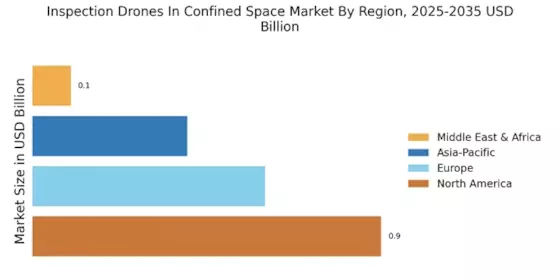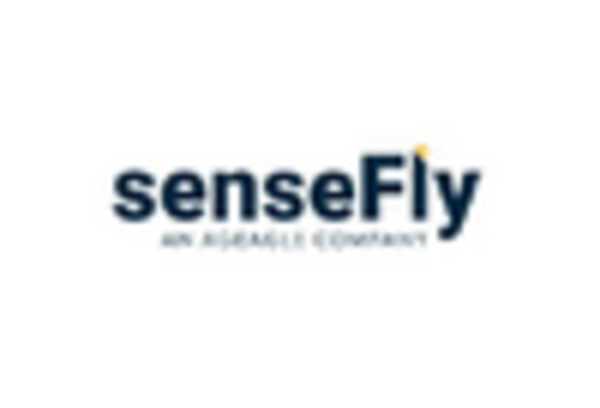Increased Safety Measures
The Inspection Drones In Confined Space Market is experiencing a surge in demand due to heightened safety regulations across various sectors. Organizations are increasingly adopting drones to mitigate risks associated with human entry into hazardous environments. The use of drones minimizes the potential for accidents, thereby enhancing worker safety. According to recent data, the implementation of drones has led to a 30% reduction in workplace incidents in confined spaces. This trend is likely to continue as companies prioritize safety and compliance with stringent regulations, further driving the market for inspection drones.
Technological Innovations
The Inspection Drones In Confined Space Market is significantly influenced by rapid technological advancements. Innovations in drone technology, such as improved sensors, enhanced battery life, and advanced imaging capabilities, are expanding the applications of drones in confined spaces. These advancements enable more accurate data collection and analysis, which is crucial for industries like oil and gas, construction, and utilities. The integration of artificial intelligence and machine learning into drone operations is also enhancing their efficiency and effectiveness. As these technologies continue to evolve, they are likely to drive further adoption of drones in confined space inspections.
Cost-Effectiveness of Drone Solutions
The Inspection Drones In Confined Space Market is benefiting from the cost-effectiveness associated with drone technology. Traditional inspection methods often involve significant labor costs and potential downtime, whereas drones can perform inspections quickly and with minimal human intervention. This efficiency translates into reduced operational costs for companies. Recent analyses suggest that organizations utilizing drones for confined space inspections can save up to 40% in operational expenses compared to conventional methods. As businesses seek to optimize their budgets while maintaining high safety and quality standards, the appeal of drone solutions continues to grow.
Environmental Sustainability Initiatives
The Inspection Drones In Confined Space Market is increasingly aligned with environmental sustainability initiatives. Companies are under pressure to reduce their carbon footprints and minimize environmental impacts. Drones offer a more sustainable alternative to traditional inspection methods, as they require less energy and produce fewer emissions. Furthermore, the ability to conduct inspections without the need for scaffolding or extensive equipment reduces the environmental disruption associated with such activities. As organizations strive to meet sustainability goals, the adoption of drones for confined space inspections is likely to rise, contributing to the overall growth of the market.
Growing Demand for Infrastructure Inspections
The Inspection Drones In Confined Space Market is witnessing a notable increase in demand for infrastructure inspections. As aging infrastructure becomes a pressing concern, the need for regular and thorough inspections has escalated. Drones offer a cost-effective and efficient solution for inspecting hard-to-reach areas, such as pipelines, tanks, and tunnels. Recent statistics indicate that the market for infrastructure inspection drones is projected to grow at a compound annual growth rate of 15% over the next five years. This growth is fueled by the need for timely maintenance and the prevention of catastrophic failures, positioning drones as essential tools in infrastructure management.


















Leave a Comment